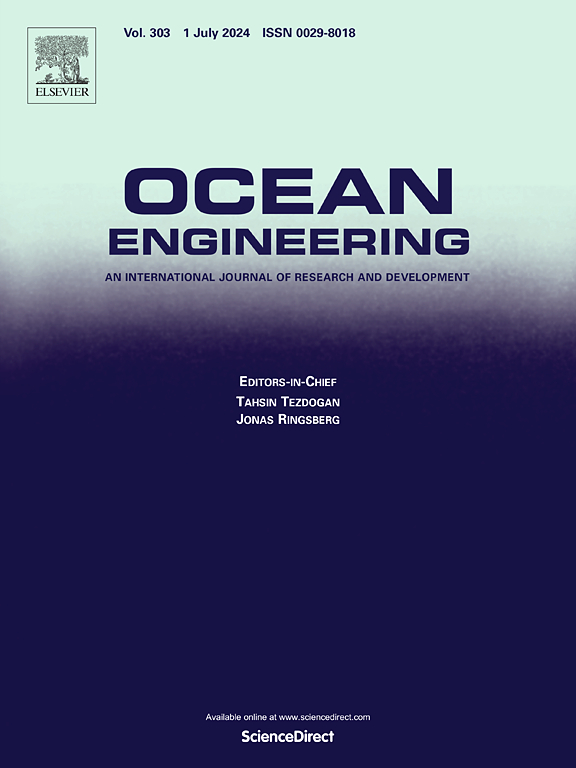Experimental investigation of remediation techniques for enhancing the seismic performance of offshore caisson-type composite breakwaters on liquefiable seabed soils
IF 4.6
2区 工程技术
Q1 ENGINEERING, CIVIL
引用次数: 0
Abstract
This study examines the failure mechanisms of offshore caisson-type composite breakwaters (OCCBs) under seismic loading through 1g shaking table model tests, comparing cases with and without remediation measures against seabed soil liquefaction. For this purpose, several countermeasures are implemented, comprising wraparound geogrid inclusions within the rubble mound layer, stone columns and compacted improvement zones in the seabed soil, all aimed at enhancing the seismic resilience and stability of OCCBs. Six physical model tests are conducted to evaluate the effectiveness of the applied remediation measures in minimizing liquefaction-induced deformations of OCCBs, including settlement, lateral movement, and tilting. Experimental findings indicate that the caisson settlement is primarily caused by the lateral flow of the foundation soil and the rubble mound layer. The combined use of stone columns and wraparound geogrid reinforcements efficiently mitigates this lateral flow. Notably, remediating just 2.8 % of the liquefiable seabed soil with stone columns decreases OCCB settlement and tilting by 45.4 % and 31 %, respectively, compared to the non-remediated model. Additionally, incorporating wraparound geogrid reinforcements within the rubble mound layer results in even further reductions of settlement and tilting by 90.6 % and 91.3 %, respectively. This research offers valuable insights for developing effective countermeasures to mitigate seismic-induced damage to OCCBs seated on liquefiable seabed soils.
求助全文
约1分钟内获得全文
求助全文
来源期刊

Ocean Engineering
工程技术-工程:大洋
CiteScore
7.30
自引率
34.00%
发文量
2379
审稿时长
8.1 months
期刊介绍:
Ocean Engineering provides a medium for the publication of original research and development work in the field of ocean engineering. Ocean Engineering seeks papers in the following topics.
 求助内容:
求助内容: 应助结果提醒方式:
应助结果提醒方式:


